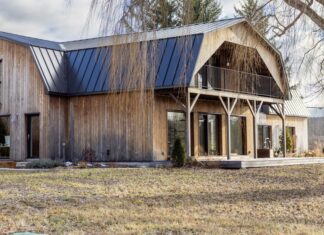After a heart attack, the human body cannot repair dead tissue on its own. But now researchers want to have found a method with which new functional cells form in the areas where the cells have died.
How can the functionality of this organ be restored in the event of heart failure? Research groups are dealing with this question all over the world – after all, according to estimates by the World Health Organization (WHO), almost 18 million people die from cardiovascular diseases every year.
A possible answer could be offered by a new form of therapy, which an international research team has now investigated. The scientists from the Technical University of Munich (TUM) and the University Hospital Rechts der Isar, the Swedish Karolinska Institutet, the biotech start-up Procella Therapeutics and the biopharmaceutical company AstraZeneca have now published a study in the specialist journal “Nature Cell Biology”.
In many heart diseases, heart muscle cells and blood vessels die. Instead, so-called fibrosis forms at the sites, i.e. accumulations of scar tissue, which can impair the heart in the long term. As the “Heart Foundation” explains, cardiac insufficiency often occurs after a heart attack because the muscle is damaged over the long term. The bodies of some animals, particularly amphibians and fish, can repair such damage. However, the heart of an adult person is almost incapable of doing this.
Stem cell therapies are an experimental approach to restore damaged heart tissue. In earlier studies, heart cells developed from stem cells, more precisely: cardiomyocytes, were experimented with. However, this often resulted in side effects such as an irregular heartbeat and fatal cardiac arrhythmia.
The team led by Karl-Ludwig Laugwitz, Professor of Cardiology at TUM, therefore uses a different method – on cardiac progenitor cells, so-called “HVPs”. These cells are instrumental in the formation of the heart.
The various cell types of the heart muscle, including cardiomyocytes, gradually differentiate from them. The research team has succeeded in producing large quantities of such cardiac progenitor cells from early-stage human stem cells. “We see here the result of two decades of research in which we searched for the ‘ideal cell’ to rebuild the heart muscle,” describes Kenneth R. Chien, Professor of Cardiovascular Research at Karolinska Insitutet.
The scientists used these cells to study the complex molecular processes that take place when repairing damaged areas of the heart muscle. “In laboratory experiments, we were able to show how cardiac progenitor cells can, so to speak, track down the damaged areas in the heart, migrate there in a targeted manner and differentiate into functional heart cells. In addition, they actively prevent the formation of scar tissue by fighting off fibroblasts, i.e. the cells that build the framework for the functionless connective tissue,” explains Laugwitz.
In a next step, the interdisciplinary team used pigs to investigate the effectiveness of treating heart damage with HVPs. Their organs are very similar to those of humans. Tests with pigs are therefore often on the verge of studies with human patients.
The study showed that damage to the heart can be repaired reliably and without serious side effects. “We have observed the formation of new heart tissue, improved heart function and reduction of scar tissue after treatment,” said Regina Fritsche-Danielson, Head of Research and Early Development at AstraZeneca.
In the coming months and years, the scientists want to further develop their research results into a therapy for heart patients. An important intermediate step is the development of so-called “hypoimmunogenic lines” of HVPs.
So far, the immune system of the recipient of cell therapy has had to be overridden so that the immune system does not destroy the cells. Hypoimmunogenic cells could make this step unnecessary as they would not be considered foreign by the body. These hypoimmunogenic cells and possible side effects are to be researched in further studies. The aim is to start clinical studies on the therapeutic use of HVPs within the next two years.
“The new findings on the therapeutic use of cardiac progenitor cells are a milestone in the treatment of patients with severe heart failure,” summarizes Laugwitz benefit.”
















































